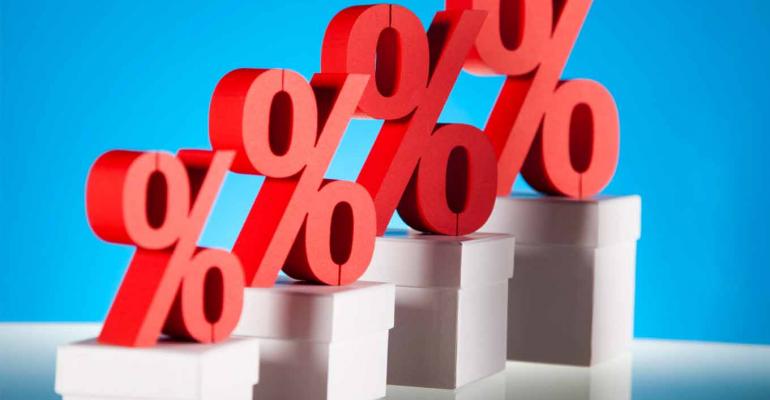In a widely anticipated move and amid a growing U.S. economy, the Federal Reserve on Wednesday raised interest rates to a range between 1.25 and 1.5 percent. The move had been expected among those in the real estate industry.
The announcement Wednesday came after the central bank’s Federal Open Market Committee’s two-day meeting. Charles Evans, president of the Federal Reserve Bank of Chicago, and Neel Kashkari, president of the Federal Reserve Bank of Minneapolis, wanted to maintain the existing range and voted against the hike.
“We believe the rate increase was well-communicated to markets and had been anticipated,” said Ruben Gonzalez, an economist at Keller Williams, a real estate franchise. He added that he expects mortgage rates to remain affordable and to rise slowly in the near term.
For commercial real estate in particular, it appears that rate hikes do not matter much, says Ryan Severino, chief economist at real estate services firm JLL. “We have been hiking rates for the last two years with no discernable impact on commercial real estate,” he says. “That is because the economy continued to grow quickly enough over the last two years to support real estate even in the face of rising rates.”
What could have an effect on the sector is the cumulative impact of rate increases over time, Severino notes. “Eventually, if rates are raised too quickly, relative to the underlying growth rate in the economy, then that could stymie economic growth and consequently the performance of commercial real estate,” he says.
If the Fed continues with the rate hikes in 2018, cap rate spreads may compress somewhat, according to Chris Muoio, senior quantitative strategist with online marketplace Ten-X. “However, at this stage, the economy should be strong enough to absorb the rate hike,” Muoio says.
Rates will likely continue to slowly rise in the near term. For 2018, officials signaled three quarter-point rate raises, as well as two hikes in both 2019 and 2020, reports the Wall Street Journal. According to new projections, the bank’s officials expect the U.S. economy to grow by 2.5 percent this year and in 2018—and they expect economic growth through 2020. “The growth that we’re seeing, it’s not built on, for example, an unsustainable build-up of debt,” Chairwoman Janet Yellen said at a news conference, according to the Journal. “The global economy is doing well. We’re in a synchronized expansion. This is the first time in many years we’ve seen this… I feel good about the economic outlook.”
In its statement after the meeting, the FOMC said that the U.S. economy has been growing at a “solid rate” and the labor market has continued to strengthen since the committee last met in November, though inflation continues to remain below its 2 percent target rate. Even disruptions from the hurricanes have not majorly impacted the outlook for the national economy. “Consequently, the Committee continues to expect that, with gradual adjustments in the stance of monetary policy, economic activity will expand at a moderate pace and labor market conditions will remain strong,” according to the statement.
Despite the increase, interest rates are still low and there is an expectation that in the near term, rates will remain manageable, says K.C. Sanjay, senior real estate economist for Axiometrics, a RealPage company which provides apartment and student housing market intelligence. “The bump in rates is no surprise and already has been built into deals that are in process,” Sanjay says. Over the year, multifamily investors and REITs may see moderating total returns—not because of a rise in interest rates, but because of the more competitive environment in market fundamentals, he adds.
The rate increase was the third this year—the prior one was in June—and the fifth since the financial crisis. In September, the central bank chose to hold interest rates at 1.0 to 1.25 percent. In October, the bank began to sell off its $4.5 billion portfolio of bonds and other assets.
In November, President Donald Trump nominated Jerome Powell, a current governor on the board, to replace Yellen as chair of the central bank—an appointment that is unlikely to drastically disrupt markets. Powell, if confirmed, is expected to take over the role in February. “We don’t anticipate dramatic changes in rates in the near term barring discontinuity in Federal Reserve policy resulting from the change in leadership set to take place next year,” said Gonzalez, of Keller Williams.

